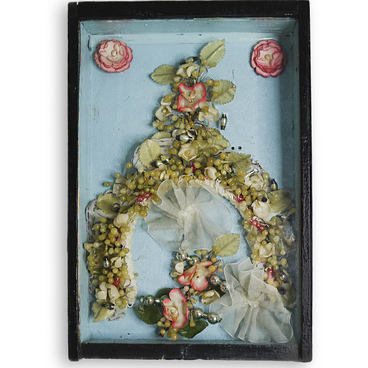A saukele is a Kazakh women’s wedding headdress. It was popular in the 19th century. A hand-sewn saukele was handed over to the museum by the Omsk department of the Russian Geographical Society in 1923. The item had been purchased from a Kazakh person called Urma in the village of Kosh-Agach (Altai, Russian Empire).
The name of the headdress comes from the words “sau” (sunny, beautiful) and “kele” (head). This element of clothing served as a symbol of the beginning of a new life. The saukele was the most expensive element of a bride’s dowry along with a yurt. Richly decorated headdresses represented the best examples of Kazakh applied folk art.
The most skillful artisans were engaged in making saukele. Jewelers cast, stamped or embossed metal parts. It generally took a whole year to make one saukele. Its cost reached about 1000 rubles by the early 20th century, which was equivalent to a hundred horses. Each headdress was unique.
It was possible to determine the social status of the bride’s father by how beautiful and long the saukele was. Kazakhs sought to decorate it as lavishly as possible. The saukele was passed from mother to daughter, from generation to generation. According to custom, the bride was dressed in wedding clothes in her father’s house. After the wedding, the young wife wore this headdress on special occasions until the birth of her first child.
The cap, which is part of the saukele, was made of thick, coarse dark brown cloth. Its lower part was lined inside with thick linen cloth of light brown color. The cap consists of a crown and a band. The crown — the main, upper part of the hat — was made in the form of a pointed cone. The band — the part around the head — was made of a straight strip with beveled ends.
A narrow braid was sewn in the middle of the crown at the back and front, from top to bottom. The front half of the band was covered with a net of coral threads. It was believed that they protect against the evil eye and spoilage. Light metal stamped plaques were sewn to the lower strip of this net. A thin strip of fur was added to the lower edge of the band.
Earflaps made of fine
red cotton cloth were attached to the sides of the headdress. Thick threads
strung with coral, small pearls and
golden beads were sewn to them. Kazakhs believed that pearls protect from the
wall-eye. Two cords of human hair were sewn to the back of the saukele.


